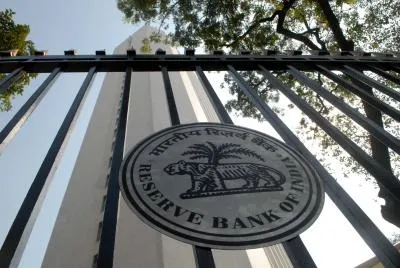What Drives RBI’s Record Dividend Bonanza?

Synopsis
Key Takeaways
- RBI's dividend transfer is a record Rs 2.69 lakh crore.
- Strong dollar sales and forex gains are key drivers.
- CRB increased to 7.5 percent for risk management.
- Foreign exchange reserves peaked at $704 billion.
- Fiscal deficit expected to ease to 4.2 percent of GDP.
New Delhi, May 24 (NationPress) The unprecedented Rs 2.69 lakh crore dividend windfall from the Reserve Bank of India (RBI) to the government is attributed to strong gross dollar sales, enhanced foreign exchange gains, and consistent growth in interest income, as highlighted in a recent report.
Significantly, the RBI emerged as the leading seller of foreign exchange reserves in January compared to other Asian central banks. By September 2024, foreign exchange reserves soared to $704 billion, with the RBI offloading substantial dollar amounts to ensure currency stability.
In a strategic decision, the RBI has elevated its risk buffer; otherwise, the dividend transfer could have exceeded Rs 3.5 lakh crore, according to SBI Research’s ‘Ecowrap’ report.
“The RBI Board has advised that the risk provisioning under the Contingent Risk Buffer (CRB) be sustained within a range of 7.5 percent to 4.5 percent of the RBI’s balance sheet. The transferable surplus for the year has been calculated based on the updated Economic Capital Framework (ECF) ratified by the Central Board during its meeting on May 15, 2025,” the report elaborated.
Considering the revised ECF and the macroeconomic analysis, the Central Board opted to further raise the CRB to 7.5 percent (up from 6.5 percent in FY24 and 6.0 percent in FY23).
The surplus dynamics for the RBI were influenced by its Liquidity Adjustment Facility (LAF) operations and interest income accrued from its domestic and foreign securities holdings. The balances under the daily LAF indicate that the RBI was in absorption mode from June 3 to December 13.
However, post mid-December, the system liquidity shifted to injection mode until the end of March 2025. The average absorptions contribute to the RBI’s expenses under LAF.
The Union Budget for 2025-26 anticipated a dividend income of Rs 2.56 lakh crore cumulatively from the Reserve Bank and public sector financial institutions.
With today’s transfer, this figure is expected to significantly surpass the budgeted estimates.
“We predict a reduction in the fiscal deficit by 20 bps from the budgeted level to 4.2 percent of GDP. Alternatively, it will allow for additional spending of around Rs 70,000 crore, assuming other factors remain constant,” stated the report.









